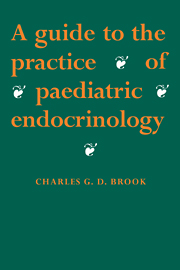1 - Intersex
Published online by Cambridge University Press: 09 October 2009
Summary
The first question a mother asks at delivery is the sex of her baby: when her question is met by anything but an unambiguous answer (Fig. 1.1), the consequences assume a lifelong importance.
Establishment of chromosomal sex occurs at the time of fertilization when the ovum is fertilized by a sperm bearing an X or Y chromosome. Since embryos carrying the Y chromosome develop as males, regardless of the number of X chromosomes, the conclusion is that the presence of the Y chromosome plays a critical role in switching on a complex process of male differentiation.
Sexual determination
Embryos of both sexes develop in a similar manner until 6–7 weeks of gestation, after which development diverges to result in male or female phenotype. In the presence of a Y chromosome, the undifferentiated gonad develops into a testis; in its absence it develops into an ovary but it can be extremely difficult histologically to determine which is which in the early stages of this process. The mechanism by which this occurs is still being debated.
The histocompatibility–Y antigen (H–Y antigen) was discovered when skin grafts from male to female mice were rejected but no reaction was documented from females to males or between the same sex. As the gene for the H–Y antigen was located on the Y chromosome, it was assumed to be the sex-determining gene but this hypothesis was not adequate to explain why a human XX male was described with negative H–Y antigen nor a XY female with positive H–Y antigen status.
- Type
- Chapter
- Information
- A Guide to the Practice of Paediatric Endocrinology , pp. 1 - 17Publisher: Cambridge University PressPrint publication year: 1993



